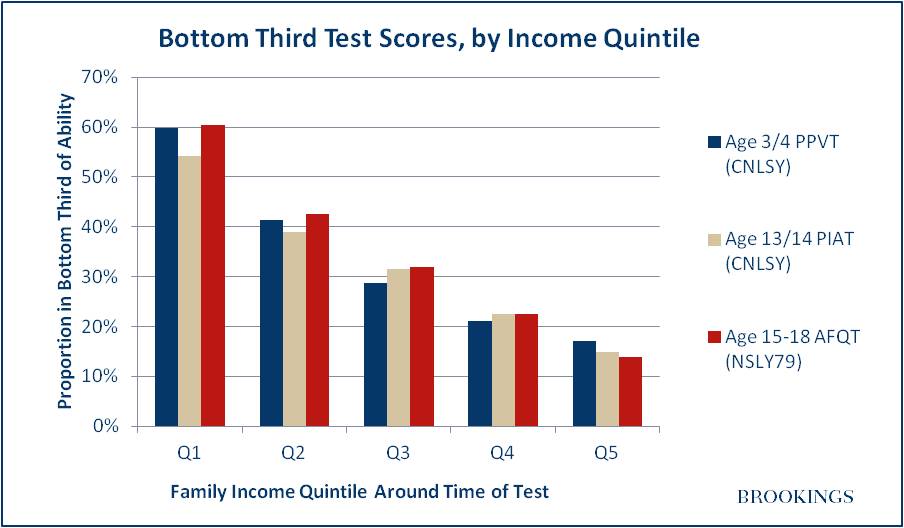Part 2 in a three-part series on inequalities in early childhood development.
Deep divisions between rich and poor emerge in early childhood, with lifetime implications for social mobility. Yesterday, I showed the way affluent children dominate the top of the test score distribution, from pre-school onwards. The story for those scoring poorly on tests is, as you’d expect, a mirror image:

There is a particularly sharp break towards the bottom of the income distribution: six out of ten of those from the bottom quintile are in the bottom third of test scores, compared to around four in ten of those from the next quintile up.
So what? Well, for one thing it looks as though the administration’s focus on the early years is fully justified. The gaps in cognitive ability between rich and poor that have opened up by the age of 3 or 4 are apparently replicated, almost automatically, up through adolescence. Closing the gap early is the right priority, especially between the poorest and the rest.
Four caveats:
- The administration’s pre-k proposals are aimed at 4-year-olds, but by this time the gaps have already emerged. Tamara Halle and her colleagues at Child Trends find that ability gaps by income actually widen quite dramatically between the ages of 9 months and 2 years, when pre-k is still a distant prospect.
- The push on pre-k education should be heavily supplemented by programs to support parents. Parents are the ultimate pre-k educators, and many need help to do a better job, not just in the early years, but in the early months. Parenting should rank alongside pre-k education as a priority for policy-makers, as Kimberly Howard and I argue in our recent paper The Parenting Gap.
- The effectiveness of pre-k programs cannot simply be assumed. Some work much better than others. Ongoing, rigorous evaluation is required. The administration is right to be focused on quality assessment.
- The biggest beneficiaries of early childhood interventions—whether in the form of pre-k education or parenting support, or both—are from low-income families. Given our fiscal constraints, the targeting of programs on those most likely to benefit is vital. That’s the subject of tomorrow’s post.



Commentary
Early Childhood Achievement Gaps and Social Mobility (Part 2)
September 25, 2013